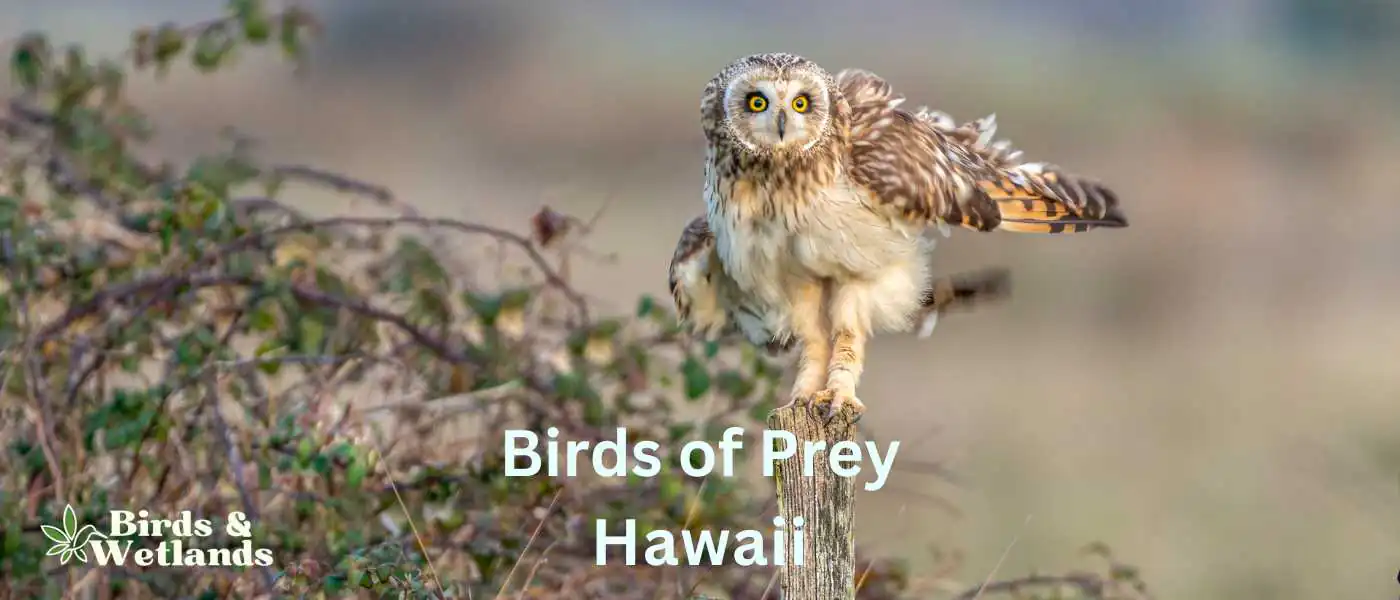Birds of prey, also known as raptors, are an integral part of the diverse and unique ecosystems found in Hawaii. These birds, which include falcons, owls, and hawks, are characterized by their keen vision, powerful physiques, and predatory lifestyles.
Despite the state’s remote location and relatively small land area, Hawaii supports a fascinating variety of these avian predators, many of which are found nowhere else on Earth. Their presence in the islands’ varied habitats, from the lush tropical forests to the rugged volcanic landscapes, is not only a testament to the natural beauty of Hawaii, but also a vital indicator of the health of its ecosystems.
List of Birds of prey in hawaii:
Hawaiian Hawk (ʻIo) – The ʻIo is the only hawk native to Hawaii and is an iconic symbol in Hawaiian culture. Found throughout the Big Island, it’s most common in forested areas such as those around the Hawaii Volcanoes National Park.
Pueo – This endemic subspecies of the Short-eared Owl is common in open grassland areas, particularly on the islands of Maui and Kauai. They can often be seen hunting during the day.
Barn Owl – Introduced to the islands to control rodent populations, Barn Owls have become a common sight in open areas and near human habitations across Hawaii.
Peregrine Falcon – While not native to Hawaii, Peregrine Falcons can occasionally be spotted during their long-distance migrations, often around coastal areas.
Northern Harrier – A rare visitor to the Hawaiian Islands, the Northern Harrier can sometimes be seen hunting over open fields or marshlands, particularly during the winter months.
Hawaiian Hawk (Buteo solitarius)
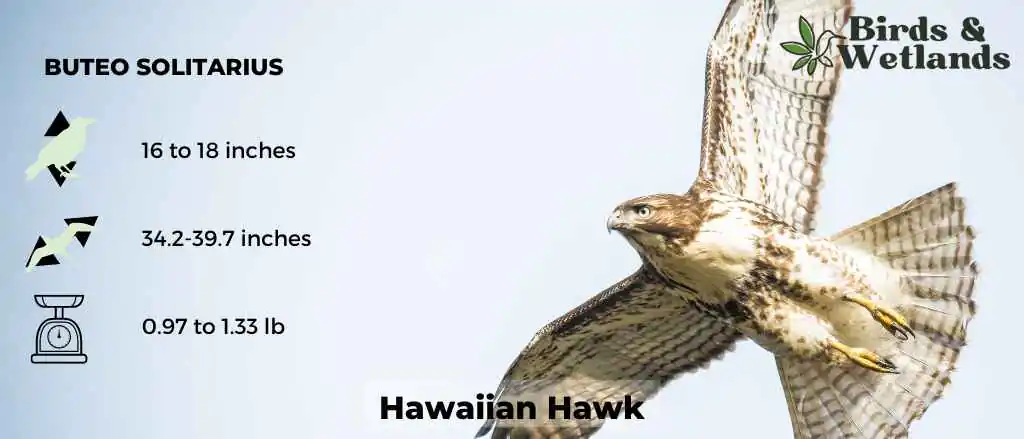
The Hawaiian Hawk is a small, short-winged bird of prey that is endemic to the Hawaiian Islands. It is one of two species in the Buteo solitarius complex, along with the Solitary Island Hawk.
- Scientific Name: Buteo solitarius
- Length: 40 to 46 centimetres (16 to 18 in)
- Wingspan: 87-101 cm (34.2-39.7 in)
- Weight: Male: 441 g (15.6 oz)/ Female: 605 g (21.3 oz)
Hawaiian Hawk Description
The Hawaiian hawk is a medium-sized bird of prey that is native to the Hawaiian Islands. It has a brown back and white chest, belly, and thighs. The head is covered with white feathers, as are its wings. The tail feathers have black tips. The eyes are yellow and the beak is black. It has a short tail, broad wings that allow it to fly at high altitudes, and large legs for perching on rocks or trees.
Hawaiian Hawk Sound
Hawaiian Hawk Habitat & Range
The Hawaiian hawk inhabits a variety of habitats in Hawaii, including rainforests, grasslands, shrublands, and even agricultural fields. They are found exclusively on the islands of Maui and Kauai.

Hawaiian Hawk Diet
They eat small birds, insects and rodents, which they catch by swooping down on them from above.
Hawaiian Hawk Nesting
Hawaiian hawks nest in tree cavities or old woodpecker holes during their breeding season from December until June or July. They lay two to three eggs that hatch after an incubation period of 28 days. One parent will stay at the nest while the other hunts for food for both parents and babies until they leave the nest at about six weeks old to form flocks with other hawks of their age group.
Pueo Owl
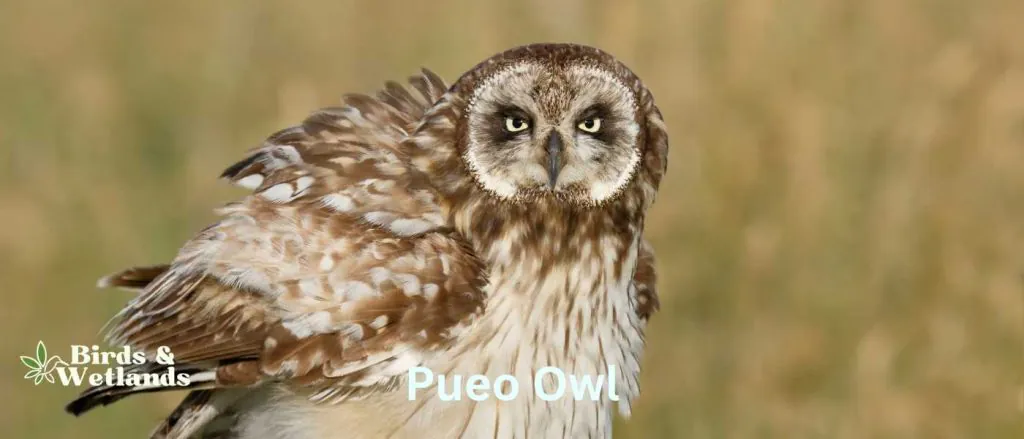
The Pueo (Asio flammeus sandwichensis) is a subspecies of the Short-eared Owl that is endemic to the Hawaiian Islands. The name “Pueo” comes from the Hawaiian language and is used locally in Hawaii to refer to this particular bird.
Pueo owls are medium-sized, measuring about 13 to 17 inches in length with a wingspan that ranges from 33 to 41 inches. They have mottled brown bodies, pale underparts, and yellow eyes. A notable characteristic of Pueo, similar to other short-eared owls, is their relatively short ear tufts which are often not visible.
Unlike many other owl species, Pueo can often be seen hunting during the day as well as at night. Their diet mainly consists of small mammals, but they will also eat birds and insects. They are skilled hunters, known for their ability to glide and hover before diving onto their prey.
In Hawaiian culture, the Pueo is considered an ‘aumakua, or family god, and is revered as a protector spirit. Seeing a Pueo is often considered a good omen.
Pueo nest on the ground, typically laying between 3 to 11 eggs. The female incubates the eggs while the male provides food.
Barn Owl (Tyto alba)

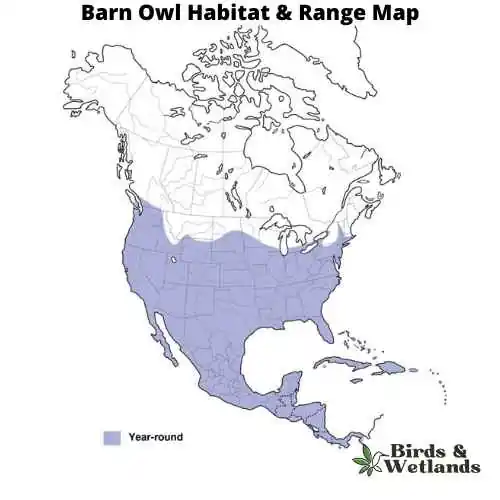
Barn Owl Sound
Scientific Name: Tyto alba
Length: 13 to 15 in
Wingspan: 31 to 37 in
Weight: 9.2 oz
The Barn Owl is a widespread species of owl known for its distinctive heart-shaped facial disc.
Barn Owls are medium-sized owls, they are pale overall with golden-brown wings and back, contrasted by a white face, chest, and belly. Their most notable feature is their heart-shaped facial disc, which helps channel sound to their ears.
Barn Owls are typically found in open habitats, including farmland, woodland, and marshes. They are named for their habit of nesting in human structures such as barns, church towers, and in the hollows of large trees. These owls are nocturnal, hunting at night and roosting during the day.
The diet of Barn Owls primarily consists of small mammals, particularly rodents such as mice and rats. They are known for their silent flight, which allows them to sneak up on their prey without detection.
Barn Owls have a unique nesting behavior. They do not build nests, but instead, lay their eggs directly on the bare surface of a secluded ledge or cavity. A female typically lays 4-7 eggs, and both parents help incubate the eggs and care for the chicks.
Peregrine Falcon (Falco peregrinus)
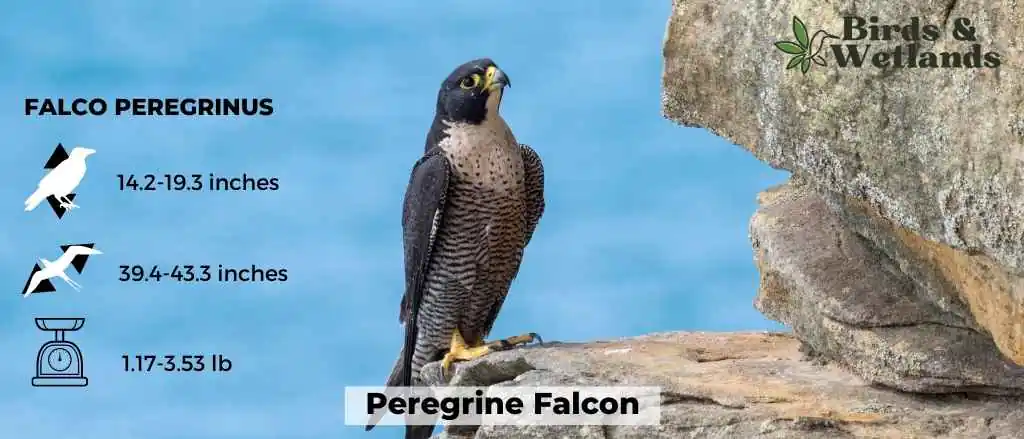

Peregrine Falcon Sound
Scientific Name: Falco peregrinus
Length: 14.2-19.3 in
Wingspan: 39.4-43.3 in
Weight: 530-1600 g
Known for its blue-gray plumage and unique cheek bars, the Peregrine Falcon stands as a beacon of power and swiftness. Despite its modest size, it reigns as the world’s fastest creature, reaching staggering speeds up to 240 mph during hunting dives.
Its diet mainly includes birds, occasionally bats, caught in an enthralling aerial display of agility and precision. Adapting to diverse habitats, this bird graces every continent except Antarctica, finding home in environments from city skyscrapers to towering cliffs.
Peregrine Falcons, monogamous in nature, often pair for life, expressing their bonds through complex courtship flights filled with intricate aerial maneuvers. They construct simple scrape nests on high ledges, often without adding materials.
Their parenting duties are shared, from egg incubation to feeding and caring for the chicks, ensuring their offspring are ready to take on the skies in their own time.
Northern Harrier (Circus hudsonius)
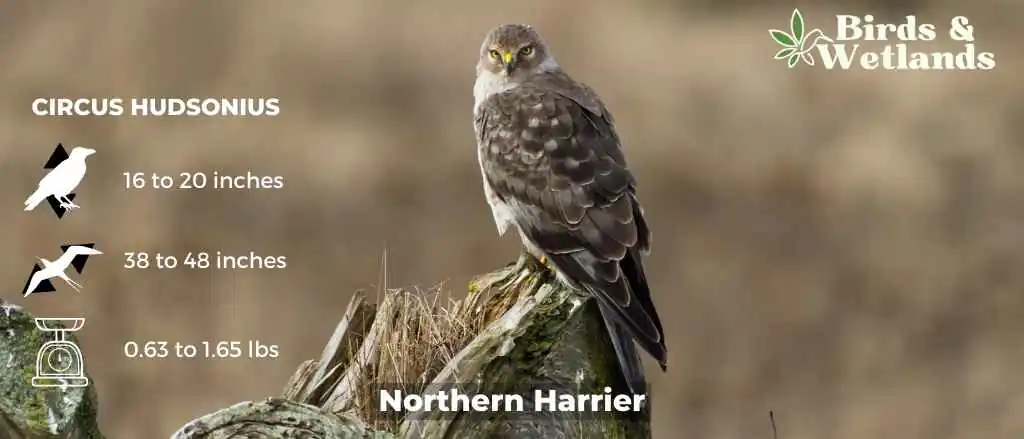
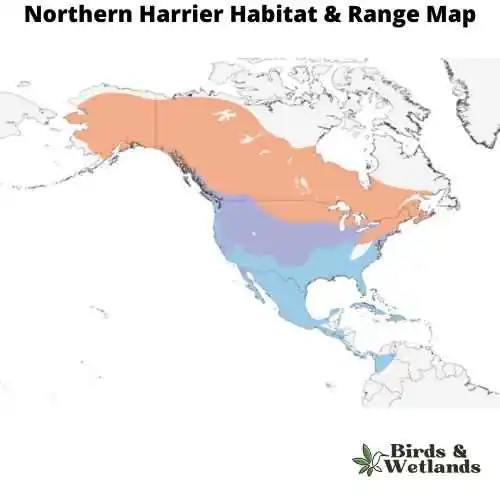
Listen:
The Northern Harrier is a medium-sized, slender hawk.
Adult birds are gray above, with pale bars on the wing feathers and white markings on the underwings and a white rump patch. The breast is barred with black and white, and the belly is streaked with brown.
They prefer open areas, such as grasslands and marshes, but can be found in almost any open habitat except dense woods.
Northern Harriers are opportunistic hunters that feed on small mammals such as mice, voles and rabbits as well as birds including quail, grouse and ducks. They hunt by flying low over open spaces such as fields or marshes.
Northern harrier nests on the ground in lowlands or hillsides near water bodies. It lays two to four eggs which hatch after 24 days of incubation by both parents. The chicks fledge after 30 days of hatching and remain dependent on their parents for another three weeks during which they learn how to fly.
Where to Spot Hawaii’s Birds of Prey
Haleakala National Park, Maui: Known for its volcanic landscapes and diverse ecosystems, this national park is a prime location for spotting the ‘Io (Hawaiian Hawk) and the Pueo (Hawaiian Short-eared Owl).
Hawaii Volcanoes National Park, Big Island: This park offers unique birdwatching opportunities with its distinct habitat. You can observe the endangered ‘Io and the Pueo, which are native to Hawaii.
Kilauea Point National Wildlife Refuge, Kauai: Home to a wide array of seabirds, this refuge is also a habitat for the Pueo. Visit the lighthouse for panoramic birdwatching views.
Kīpuka Puaulu (Bird Park), Big Island: This area is known for its bird-rich old-growth forests. It provides an opportunity to spot the Pueo, particularly at dawn or dusk.
Kealia Pond National Wildlife Refuge, Maui: This coastal saline pond is a hotspot for waterbirds, but you can also occasionally spot the ‘Io and Pueo. Its wetland area and boardwalk provide excellent birdwatching opportunities.
The islands of Hawaii host an array of unique birds of prey. Although geographically distant, the Birds of Prey of California offer an intriguing parallel, showcasing the Golden State’s varied landscapes. Understand these raptors further with our all-inclusive Birds of Prey Guide.
What is the Hawaiian name for the native hawk species with a dark brown head, recognized as an endangered species by the Fish and Wildlife Service?
The native hawk species in Hawaii with a dark brown head is commonly known as the Hawaiian Hawk, or by its Hawaiian name, ‘Io. It’s recognized as an endangered species by the Fish and Wildlife Service.
Can you describe the feeding habits and breeding season of the Hawaiian short-eared owl, another bird of prey on the Big Island?
The Hawaiian short-eared owl, known locally as Pueo, is a bird of prey that primarily feeds on small mammals and insects. Introduced species such as rats and mice, and sometimes game birds, are part of their diet. Their breeding season can last up to nine months, starting from late winter to early spring.
How does the Red-tailed Hawk, an introduced species, affect the native birds of prey in Hawaii, particularly on the Big Island?
Red-tailed Hawks (a member of the hawk family) was introduced from North America, competes with native birds of prey, like the Hawaiian Hawk and the Hawaiian Short-eared Owl, for food and habitat. The Fish and Wildlife Service, along with Native Hawaiians, are closely monitoring its impact.
What is the significance of the ‘light morph’ and ‘dark morph’ when discussing the Hawaiian Hawk?
The terms ‘light morph’ and ‘dark morph’ refer to the color variations found in the Hawaiian Hawk. The ‘light morph’ has a dark brown head and a predominantly white body, while the ‘dark morph’ is entirely dark brown. These variations are a significant identifier for this species.

